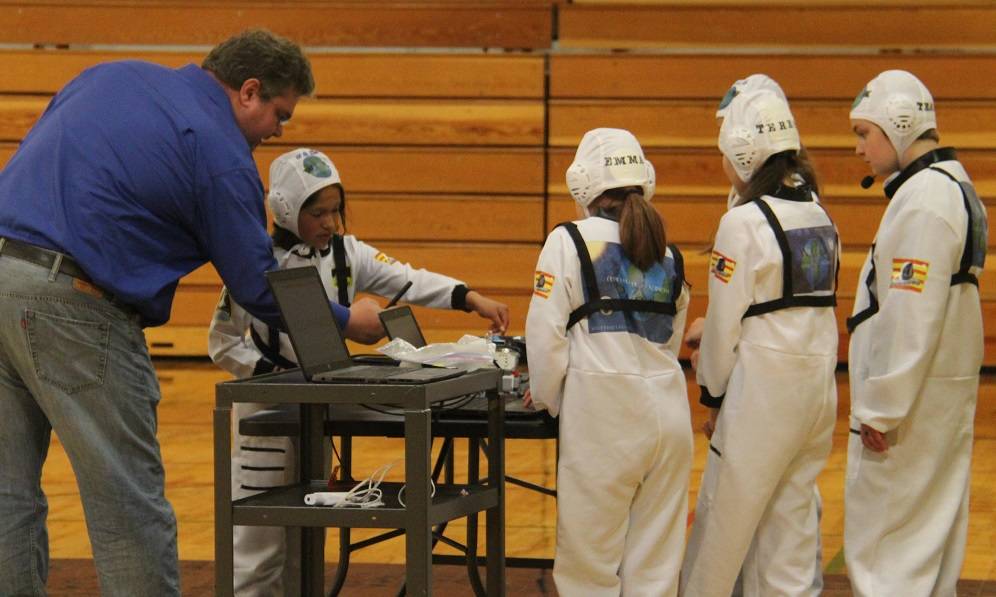Nearly 300 middle and high school students from across the Olympic and Kitsap peninsulas recently participated in the Apollo Next Giant Leap Student Challenge being organized by the Northwest Earth and Space Sciences Pipeline (NESSP) and the Northwest Discovery Lab (NWDL).
This nationwide event was funded by a grant from NASA’s Office of STEM Engagement, challenged students to design and build a lunar lander, program a Lego Mindstorms EV3 rover, and work together as a team to achieve ambitious goals to commemorate the 50th anniversary of the Apollo moon landing.
At least two peninsula teams were to be selected May 31 to participate in the state event at the University of Washington campus July 16-20.
NESSP is providing the teams travel support to Seattle for the state event, and the Forks WOW Team secured second place.
The grand prize is a trip to Johnson Space Center in Houston, Texas, this August.
The NW Discovery Lab coordinated numerous local qualifier events and a panel of local judges evaluated and selected
the teams that will represent the Peninsula
On Thursday, May 23, the judge arrived an hour late (because of Lake Crescent road construction) to film and evaluate two excited teams of Forks fifth graders.
Working with the two teams for many hours after school for the past few months has been Charla Scholstak, who said, “Our girl’s team, WOW (Women of the World) have been invited to the Tri-State challenge in Seattle in July to compete against 40 plus teams.
“Our girls’ team took second place in the challenge against 34 teams on the Olympic Peninsula. The boys’ team, Spartan’s Giant Leap, placed fifth and will know by June 16 if they will be invited to the Tri-State competition.
“At this point, moving forward, we are the youngest team to compete at middle school level!”
After each team competed, the judge confided to Schostak that they did far better than many teams much older than them.
Congratulations to TeaRenee Peregrine, Ali Palmer, Teresa Schwegel, Emma LaCross and LaRayne Blair. You are going to Seattle!
Congratulation to the boys’ team for placing fifth: Osvaldo Julio, Darinel Garcia, Alvaro Martin and Nery Jeronimo.
“The regional competition will be July 16-20 in Seattle. The winner showcase for the teams that make it through will be Aug. 5-7 in Houston at the Johnson Space Center,” Schostak said.
The NW Discovery Lab has provided all the Peninsula teams with equipment, support and materials to participate in the challenge.
For more information about the event and the teams, visit www.nwdiscoverylab.org/apollo.
About the NWDL
The Northwest Discovery Lab’s mission is to develop, promote and support science, technology, engineering and math (STEM) education for youth on the Olympic Peninsula.
Its goal is to develop long-term, sustainable STEM and computer science education programs for youth of all ages.
The NWDL provides logistical, technical and financial support to educators, school districts and youth organizations across Washington.
The Northwest Discovery Lab is a state nonprofit based in Port Townsend.
About NESSP
The Northwest Earth and Space Sciences Pipeline (NESSP) brings NASA science to the Northwest — from Oregon and Washington inland to Montana and the Dakotas.
Funded through the NASA Science Mission Directorate, NESSP operates out of the University of Washington in Seattle where it’s co-located with the Washington NASA Space Grant Consortium.


